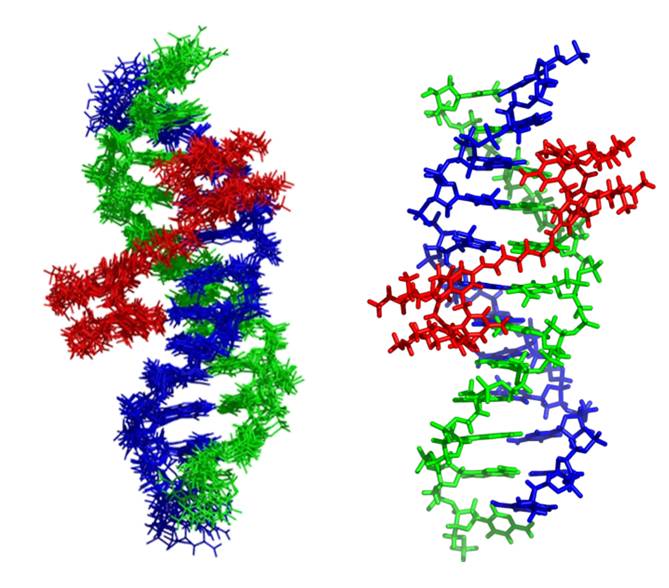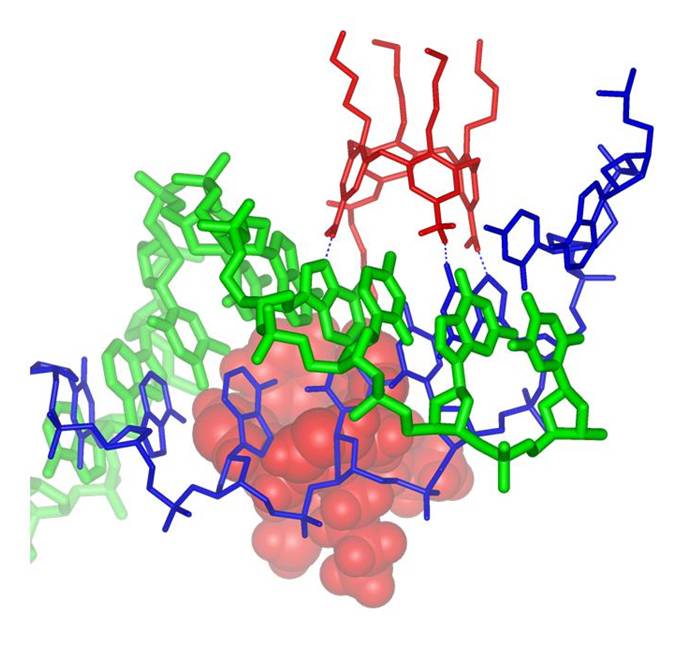Research
DNA recognition by tailored ligands for the major groove:
Natural and artificial DNA binders can dock onto double-stranded nucleic acids by intercalation, external phosphodiester binding as well as by incorporation inside the minor or major groove. For the noncovalent recognition of DNA by artificial ligands, only few prototypes exist that occupy the wide major groove, where genetic information is best accessible.
Some time ago we accidentally discovered, that dimeric calix[4]arene derivatives with cationic groups at their upper rims bind to the major groove and thereby place the spacer very close to the base pairs. We are now developing special functionalized spacers for these molecules, in order to be able to read the base sequence and target specific gene fragments.
In a totally new approach we also design special building blocks which are able to recognize each base pair. These will be fused in an iterative process to generate oligomers for the targeting of promotor sequences of selected genes.
References
- DNA Recognition by Large Calixarene Dimers. R. Zadmard, T. Schrader, Angew. Chem. Int. Ed. 2006, 45, 2703-2706.
- DNA Recognition with Large Calixarene Dimers and Varying Spacers. C. Breitkreuz, R. Zadmard, T. Schrader, Supramolecular Chemistry (special issue dedicated to D. Reinhoudt) 2008, 20, 109-115.
- Dimeric Calixarenes – A New Family of Major Groove Binders. W. Hu, C. Blecking, M. Kralj, L. Šuman, I. Piantanida, T. Schrader, Chem. Eur. J. 2012, 18, 3589-3597.



